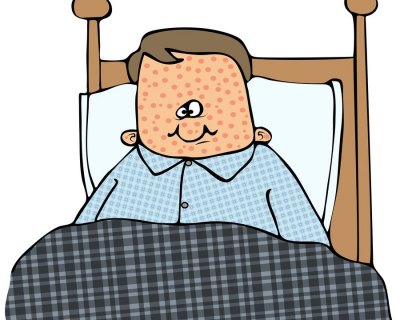A primer: measles, mumps and rubella

Even with available vaccines, measles killed 145,700 globally in 2013, according to the World Health Organization. That’s roughly 400 deaths each day or 16 deaths every hour.
It's one thing to know that this preventable disease is a problem in Third World countries. But in 2014, the United States experienced a record number of measles cases -- 644 cases from 27 states, according to the Centers for Disease Control and Prevention. This is the greatest number of cases since the center documented that it had eliminated measles in 2000. And during the first month of this year, an outbreak apparently began with a person who visited Disneyland in California.
Research in 1998 erroneously linked the MMR (measles, mumps and rubella) vaccine with autism and has been credited with alarming parents and raising questions about the vaccine’s safety. That research has been debunked, but health officials believe they are still feeling its impact.
The vaccine has become controversial. Some politicians believe parents should choose whether to have their children immunized. Others believe immunizations should be mandatory. As the debate unfolds, the recent outbreak of measles -- and last year, mumps on college campuses -- reminds us that childhood viruses are still with us.
Here is a primer on the three childhood diseases that can be prevented with the MMR. We pulled information from the CDC, the National Institutes of Health and WHO.
Measles
What is it? It is an infectious disease caused by a virus. The primary symptom is an itchy rash, according to the National Institutes of Health. But that’s not all. NIH lists other symptoms, including: fever, cough, runny nose, conjunctivitis (pink eye), feeling achy and run down and tiny white spots inside the mouth.
How does it spread? Humans spread the disease. The virus lives in throat and nose mucus of an infected person and spreads through coughing and sneezing, as you would expect. But there’s also this, according to the CDC: The measles virus “can live for up to two hours on a surface or in an airspace where the infected person coughed or sneezed.”No wonder it’s so contagious. If you aren’t immunized and you breathe contaminated air or touch a contaminated surface and then touch your eyes, nose or mouth, you’ve probably got it. Even if you don’t see the telltale measles rash, the infected person could still give you the virus. Measles can be spread throughout a period beginning four days before and four days after the rash appears.
How contagious is it? Unless you are immunized or have already had measles, you don’t want to be around it. If one person has it, 90 percent of the people who are close to that person and not immune will become infected, according to the CDC.
Mumps
What is it? Another contagious disease caused by a virus, the mumps begins with fever, headache, muscle aches, tiredness and loss of appetite, followed by swelling of the salivary glands.
How is it transmitted? Not surprisingly, droplets of saliva or mucus from the mouth, nose or throat of someone with the mumps can spread the illness. This usually happens when the person coughs, talks or sneezes – but there are other possibilities. Indeed, anything that an infected person uses, such as a soda can, can be contaminated. The CDC makes simple recommendations – for example, wash your hands and don't share utensils – to help prevent the spread of the illness.
How contagious is it? Even if people don't look like they’re sick, they can still give you the mumps. Transmission “likely occurs before the salivary glands begin to swell and up to five days after the swelling begins,” according to the CDC. After a person is exposed to the virus, it can take 12 to 25 days before symptoms appear. To give you some idea of how health officials feel about this, the CDC website recommends that if you have the mumps and feel you need medical attention, you should call the doctor in advance so you don’t sit in a waiting room packed with innocent bystanders.
How dangerous is it? While described as a mild childhood disease, it can lead to complications, but serious side effects are rare, according to the CDC.
Rubella
What is it: Rubella is commonly known as the German measles. It is a contagious disease caused by a virus and is described on medical sites as mild, with fever, rash and other symptoms such as headache, sore throat and enlargement of the lymph nodes.
Transmission: It spreads through coughing or sneezing by a person who has the virus, according to the CDC.
How contagious is it? Rubella can spread seven days before the rash appears. It is most contagious when an infected person has a rash.
How dangerous is it: Rubella can cause serious birth defects if a pregnant woman is infected.
Related:
How the measles made a comeback
Flashback: Return of the mumps
Recommended:
World Health Organization: Measles -- Key Facts
Centers for Disease Control and Prevention (CDC): Measles Transmission
National Institutes of Health: Mumps
The Bantam Medical Dictionary, Laurence Urdang (Mass Market Paperback; 2009)

